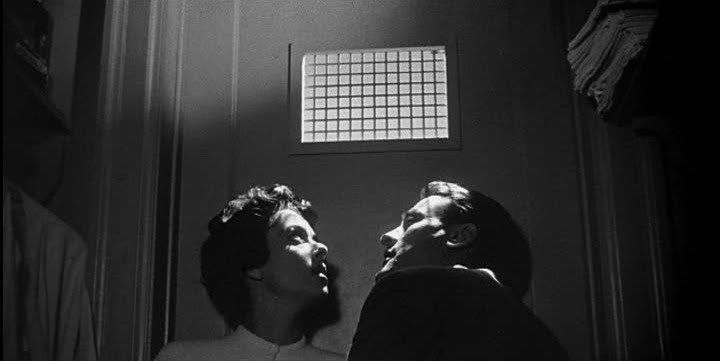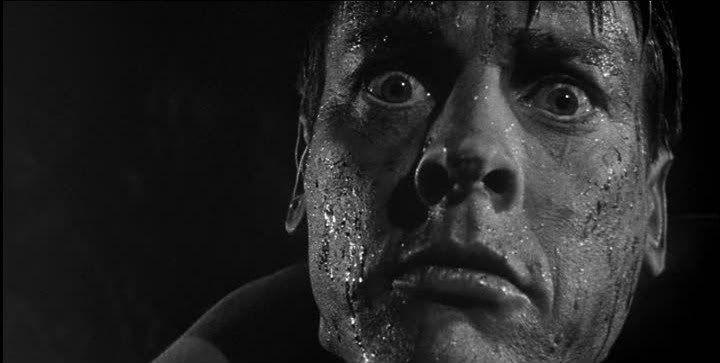 50. Devendra Banhart | Niño Rojo(Young God, 2004)
50. Devendra Banhart | Niño Rojo(Young God, 2004)Banhart's second 2004 album, after
Rejoicing in the Hands, finds the psych-folk tunesmith in a much bouncier, more playful mood, as he tries to imagine what's on the mind of a monkey, visits "greaseball heaven," grows some new smells, and urges a departing friend to eat him for breakfast. His goofy wordplay and cracked acoustic arrangements are in top form here, on his best and most fun album.
 49. Kevin Drumm | Sheer Hellish Miasma(Mego, 2002)
49. Kevin Drumm | Sheer Hellish Miasma(Mego, 2002)The album that made Drumm a legend is every bit as awe-inspiring and demanding as its reputation. It's a mammoth tower of layered noise designed not so much to shatter eardrums as to smother them. These sheets of sizzling electronic noise produce a heavy, oppressive vibe that's impossible to escape from — if one even wants to.
 48. Michael Pisaro | Harmony Series 11-16(Edition Wandelweiser, 2007)
48. Michael Pisaro | Harmony Series 11-16(Edition Wandelweiser, 2007)Composer Michael Pisaro has a perfect grasp of the balance between sound and silence, between playing and listening. His
Harmony Series represents his translations of poetry into text scores to be played as music, and the selections from this series on this beautiful disc are the best example of the composer's quiet profundity, his evocation of transcendent, meditative states. Electronic sine tones fade in and out, as various performers — including frequent collaborator Greg Stuart, whose rubbed and scraped percussion instruments are a natural fit for Pisaro's wavery drones — interpret these fragile and mysterious pieces of music.
Yuko Zama has summed up the appeal of Pisaro much better, much more eloquently, and much more in depth, than I ever could.
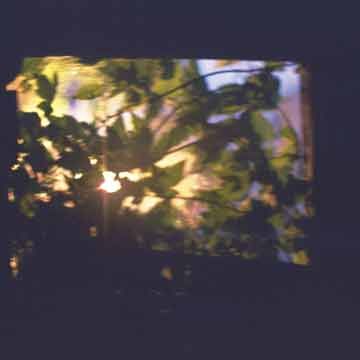 47. Jeph Jerman | The Second Attention(Anomalous, 2000)
47. Jeph Jerman | The Second Attention(Anomalous, 2000)Probably the best of Jeph Jerman's improvisations with natural objects — pine cones, branches, water, rocks, seashells, feathers, seed pods — all "played" without amplification. The intimate, quiet sound of this half-hour piece puts the emphasis on the tiny sounds Jerman coaxes from these simple objects, and the interactions between them. The sounds are minuscule, microscopic, suggesting an unseen world beneath the notice of most people in the ordinary course of life: watery gurgles, gentle porcelain clinking, glass-like tones that evoke a vibraphone, the rattling of seeds within a pod, the mouse-squeak of two tiny objects' smooth surfaces rubbing together.
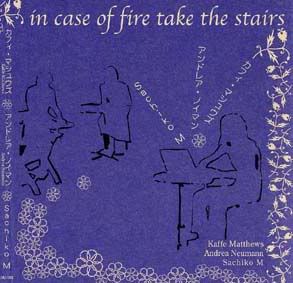 46. Kaffe Matthews/Andrea Neumann/Sachiko M | In Case of Fire Take the Stairs(IMFJ, 2003)
46. Kaffe Matthews/Andrea Neumann/Sachiko M | In Case of Fire Take the Stairs(IMFJ, 2003)This trio recording covers such a tremendous range — from delicate, near-silent whispers of sound to an abrasive, rumbling alien landscape — that it's easy to forget just how simple and abstracted these women's instruments are. Matthews uses a laptop for minimal live sound processing, Neumann plays with the deconstructed interior of a piano, removed from its original context, and Sachiko inserts ethereal sine tones into the proceedings. The resulting improvisation builds slowly from an aerated silence, with occasional clicks and whirrs, into a dense cloud that "drifts along on pulsating rhythms of sine waves and computer tones, with the periodic bristling analog rumble of Neumann’s alien-sounding piano adding a much needed organic element to the proceedings." The album covers a large emotional range too, from the chilly abstraction of the opening minutes to the "menace and edginess" of the later, denser movements.
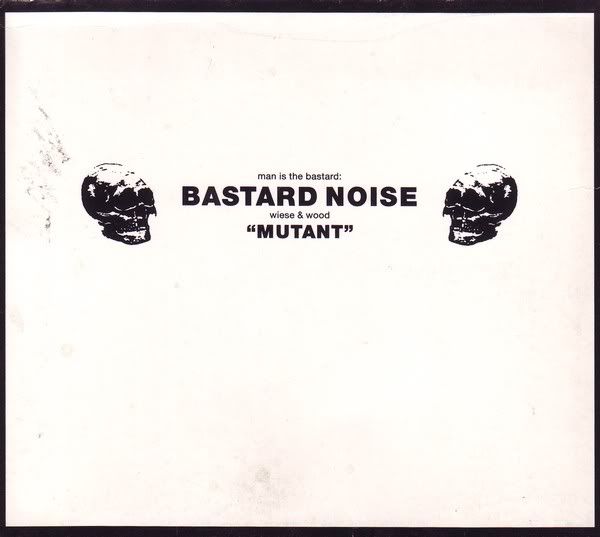 45. Bastard Noise | Mutant(Manufracture, 2002)
45. Bastard Noise | Mutant(Manufracture, 2002)Bastard Noise has had as many different sounds as they've had members, ranging from grungy full-on noise, to power electronics broken up by guttural screams, to the more spacey drone that increasingly took over the band under John Wiese's influence. Here, the band is stripped-down, as it often is, to the duo line-up of Wiese and Eric Wood (on vocals and homemade electronics).
Mutant is one of their most bracing releases. Wood's hair-raising vocals emerge, a monster slowly revealing itself, from a fog of sine tones and harsh, high squeals. The occasional understandable phrase in Wood's growls reveals a distopian, apocalyptic theme — a
Soylent Green-esque future world — and the music is appropriately bleak and alien in response.
 44. The Fiery Furnaces | Blueberry Boat(Rough Trade, 2004)
44. The Fiery Furnaces | Blueberry Boat(Rough Trade, 2004)The Fiery Furnaces' second album is overflowing with enough ideas to sustain a lesser band for an entire career. But this sibling-led band, mostly the brainchild of multi-instrumentalist Matt Friedberger and his sister Eleanor, who handles most of the vocals, isn't afraid of running out of ideas, so they simply stuff everything they've got into this wild, careening miracle of an album. The songs are mostly epic, but they never settle into any one mode for long, so each nine-minute suite feels like five or six shorter songs jammed together, with stop-on-a-dime transitions between Faust-like motorik jamming, bluesy riffing, nursery rhyme balladry, towers of organ overload, tinkling piano runs, proggish flights of fancy, and whatever else the band feels like attempting. It's dizzying and frequently exhausting, but the Friedbergers' whiplash stylistic shifts never quite overshadow their clever songwriting, their playfulness, or their sheer musical virtuosity. It's a masterful, bafflingly ambitious album.
 43. Nachtmystium | Assassins: Black Meddle, pt. 1(Century Media, 2008)
43. Nachtmystium | Assassins: Black Meddle, pt. 1(Century Media, 2008)Just how unconventional a black metal band Nachtmystium has become is evidenced by the number of Pink Floyd references embedded in their fourth album. Though
Assassins is heavy and intense, it's also an extraordinarily polished and eclectic album, blending psych-rock, grandiose melodicism and jammy sections (even including some sax interludes) into the band's metal palette. It's an ambitious attempt to retain the dark atmosphere of black metal while acquiring a sense of musicality and dynamics all too often absent from the genre.
 42. Afflux | Bouquetot/Paris/Port-Jerome(Ground Fault, 2002)
42. Afflux | Bouquetot/Paris/Port-Jerome(Ground Fault, 2002)The field recording trio of Afflux take a very unique approach to improvised music: they find a location, fill it with complex recording equipment (including amplified steel strings subject to infinitesimal vibrations) and record their interactions with this equipment and with the natural or man-made sounds all around them. The results are mysterious and beautiful, subtly shaping the sounds of wind, water and traffic noise into spacious soundscapes populated with rumbles, rustling, crackles and even fragments of processed human voices.
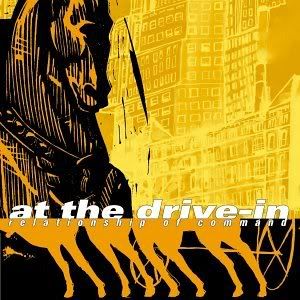 41. At the Drive-In | Relationship of Command(Grand Royal, 2000)
41. At the Drive-In | Relationship of Command(Grand Royal, 2000)The final album from these hardcore masters is also their best, with one blistering, exciting song after another. From the opening barrage of "Arcarsenal" to the mournful, spacey closer "Non-Zero Possibility," this is an absolutely shattering album, all spiky shards of guitars, relentlessly pounding drums, the howling vocals of Cedric Bixler-Zavala, and a surprising melodicism beneath the surging surface of these punk anthems.
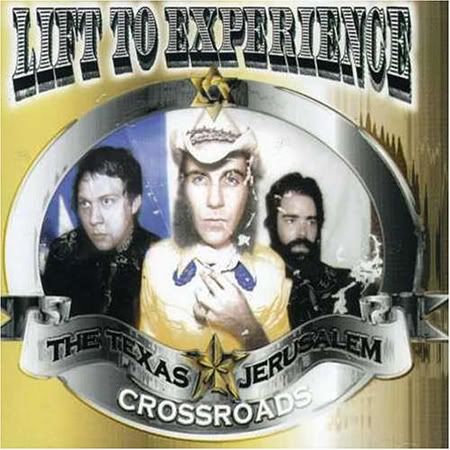 40. Lift To Experience | The Texas-Jerusalem Crossroads(Bella Union, 2001)
40. Lift To Experience | The Texas-Jerusalem Crossroads(Bella Union, 2001)It's got to be the weirdest rock concept album ever: God tells a trio of Texans that Texas, not Israel, is the true promised land, and they've been chosen as messengers to deliver this prophecy. The resulting double album follows through on this concept, combining religious ecstasy with a nearly equal patriotic/nationalistic fervor. And it couches these sentiments in some of the most thunderous, exultant, downright moving rock music, as frontman Josh Pearson's sweet, Jeff Buckley-esque voice soars above the din conjured up by his bandmates, climaxing in the slowly unfurling feedback of "The Ground So Soft," with a fragile a capella hymn at its center, the calm eye of this reverent storm.
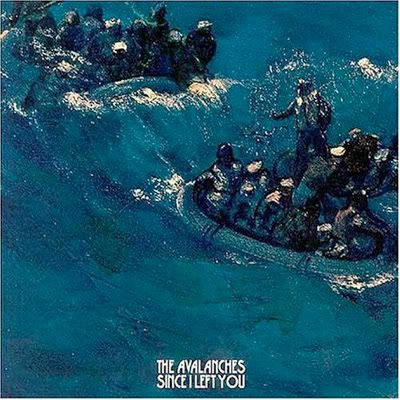 39. The Avalanches | Since I Left You(XL, 2001)
39. The Avalanches | Since I Left You(XL, 2001)Yeah, this album is pure pleasure. Assembled from thousands of sampled fragments of pop culture detritus,
Since I Left You mashes together any genre you could imagine, and a few that haven't been invented yet, to create this delirious journey through an idealized pop landscape alive with strange hybrid creatures. It's quite a trip.
 38. various artists | AMPLIFY 2002: balance(Erstwhile, 2003)
38. various artists | AMPLIFY 2002: balance(Erstwhile, 2003)This box set (seven CDs and a DVD) documents an Erstwhile Records festival in Tokyo, collecting the best of the festival's sets along with several related shows, a full studio album by Toshimaru Nakamura and Günter Müller, and Jonas Leddington's essential documentary about the event. Although there are better recordings of many of these improvisers, there are no better documents that capture the musical, intellectual and interpersonal context of this international music. Over the course of these discs, the players gather in various duos and trios, some of them familiar combos that have previously released albums together, and some new assemblies of musicians who have never played together before. This spirit of meeting and interacting is at the heart of this form of collective improvisation, and rarely is it so apparent as it is in this box.
 37. Wire | Read & Burn 01-03(Pinkflag, 2002/2007)
37. Wire | Read & Burn 01-03(Pinkflag, 2002/2007)Wire made both an instant classic punk platter (their debut
Pink Flag) and an iconic post-punk monument (
154), before turning to equally appealing moody synth-pop (
A Bell Is a Cup Until It Is Struck). Who would've guessed that they'd reinvent themselves yet again in the new millennium, turning in a pair of economical EPs that essentially melt all the band's previous phases together with an industrial-noise edge. The first EP is punkier and spikier, while the second hits the industrial angle harder, climaxing with a gorgeous callback to the band's synth-pop days. In 2007, they returned yet again with a third and equally effective installment in the series, stretching out languidly, with bursts of punk energy cutting through the gloss.
 36. Jackie-O Motherfucker | Fig. 5(Road Cone, 2000)
36. Jackie-O Motherfucker | Fig. 5(Road Cone, 2000)America's folk and roots heritage as seen through the slightly fractured mirror of a large ensemble from Portland, Oregon. A slave ballad gets re-imagined as a sing-along dirge, the constituent parts of "Amazing Grace" are pulled apart into a free jazz skronkfest, and the whole band is churned up into an electronic haze. Ragged, rootsy, and occasionally even rocking, this is the album that established JOMF as the prime purveyors of a certain skewed perspective on this country's rich musical history.
 35. Animal Collective | Here Comes the Indian(Paw Tracks, 2003)
35. Animal Collective | Here Comes the Indian(Paw Tracks, 2003)This is Animal Collective at the crux of their transition from outsider experimenters to wider acclaim and broader appeal. Their first album actually released under the name Animal Collective, it crystallized the ragged experiments of their earlier work into a series of fluid Krautrock-inspired jams, making room for the Caribbean/punk mash-up of "Slippi" and the near-religious ecstatic chanting of "Hey Light" alike.
 34. Jim O'Rourke | Insignificance(Drag City, 2001)
34. Jim O'Rourke | Insignificance(Drag City, 2001)Marrying Jim O'Rourke's sardonic vocals to a muscular rock structure, with O'Rourke's Faheyesque guitar lines often floating amidst the crunchy riffs. And his vocals are as good as they've ever been, the buttery appeal of his voice disguising the fact that these are deeply misanthropic songs, nasty-minded kiss-offs to the whole human race, delivered with just a hint of a smile to cut the implicit malice.
 33. Of Montreal | Hissing Fauna, Are You the Destroyer(Polyvinyl, 2007)
33. Of Montreal | Hissing Fauna, Are You the Destroyer(Polyvinyl, 2007)Kevin Barnes' absolutely brilliant concept album about his strained relationship with his wife and, apparently, his transformation into a black transsexual alter-ego named Georgie Fruit. Ludicrous prog concepts aside, the album is a stunner, ranging freely from the sugary indie-pop for which the band first became known, to Krautrock stompers, faux-soul, dark synth-driven glam rock, pulsing disco beats, and moments of willfully odd avant prog, like the piercing falsetto that cuts through "Gronlandic Edit" like a knife. The album sprawls out far and wide, housing Barnes' heartbreak and struggle to remake his life in irresistible pop melodies and labyrinthine structures. Rarely have drug addiction and depression ever sounded so appealing.
 32. Biota | Invisible Map(ReR, 2001)
32. Biota | Invisible Map(ReR, 2001)Biota is an unusual musical/visual collective (the visual arts branch has taken the name Mnemonists, once an overarching moniker for the entire collective) whose music is more or less impossible to categorize. Their music obliquely refers to art-rock, Eastern European ethnic music, jazz, electronic music, and in recent years, with the addition of occasional guest vocalists, avant-pop.
Invisible Map gathers all these tendencies together into one of the band's best albums, a collection of their heavily processed, studio-assembled constructions, where every instrument, every individual part, seems to have been passed through some kind of manipulation and post-processing, creating a blurry, soupy atmosphere where fragments of rubbery guitar, shuffling backwards-masked drums and echoey piano, along with numerous untraceable instrumental textures, add up to a constantly shifting, layered whole. Canadian singer Genevieve Heistek is the guest vocalist this time around, singing on a handful of art-pop gems scattered across the record, and her sporadic appearance singing these offbeat melodies is only one of the welcome surprises this band is able to consistently offer up.
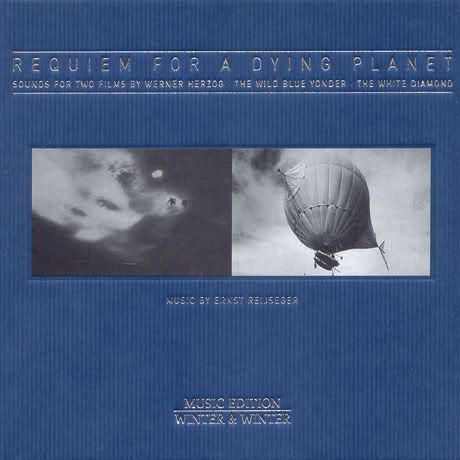 31. Ernst Reijseger/Mola Sylla/Voches de Sardinia | Requiem for a Dying Planet(Winter & Winter, 2006)
31. Ernst Reijseger/Mola Sylla/Voches de Sardinia | Requiem for a Dying Planet(Winter & Winter, 2006)An unlikely combo: Dutch cellist Ernst Reijseger, Senegalese singer Mola Sylla, and a Sardinian religious choir, all tossed together to record the soundtracks to two recent Werner Herzog documentaries. The results, as heard in
The Wild Blue Yonder and
The White Diamond, as well as this album combining both soundtracks, are stunning. The music has a vaguely spiritual sound, and a hot/cold tension at its core, as the voices of Sylla and the choir soar in lush, complex harmonies above the chilly cello drones of Reijseger. It's darkly beautiful, apocalyptic music, a perfect accompaniment to a Herzog film but also a wonderful listen on its own merits.
 30. Earth | The Bees Made Honey in the Lion's Skull(Southern Lord, 2008)
30. Earth | The Bees Made Honey in the Lion's Skull(Southern Lord, 2008)A slow-moving but always insistent crawl through metal textures, stretched out into languid jams where there's plenty of space between each reverberating riff. It's metal made somehow peaceful, relaxed, pastoral, with a delicacy and beauty in the playing that marks this out as more of an instrumental rock album despite the abstracted metal signifiers.
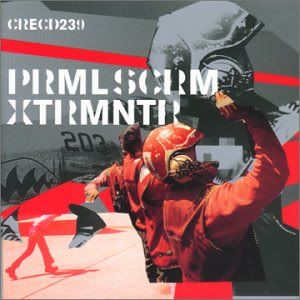 29. Primal Scream | XTRMNTR(Creation, 2000)
29. Primal Scream | XTRMNTR(Creation, 2000)The band that once crafted the ultimate trippy acid rock disc
Screamadelica got in touch with millennial angst circa 2000 and unleashed this fiery, explosive slap in the face, twisting their electronic touches into darker, industrial-metal territory. It's aggressive, ugly, pissed off and often purposefully messy (the profanity-laced rap of "Pills"), but there's no question that some edgily beautiful music ultimately emerges, exhausted and assaulted, from the maelstrom.
 28. Scott Walker | The Drift(4AD, 2006)
28. Scott Walker | The Drift(4AD, 2006)As intense and epic as music gets. Listening to this dark, tumultuous music, it's hard to believe Scott Walker was ever a top-charting pop singer. Walker's voice, so bold and scarily beautiful, so forceful, soars atop arrangements which are by turns skeletal and unbearably dense. The music ranges from scattered string hits to a foreboding electronic sizzle to movements of pounding intensity with overloaded drums beating against the hard purity of Walker's voice. It is supremely discomfiting music, dealing with ugly and frightening emotions that are reflected equally in every poetic word and every twist and turn of the audacious arrangements.
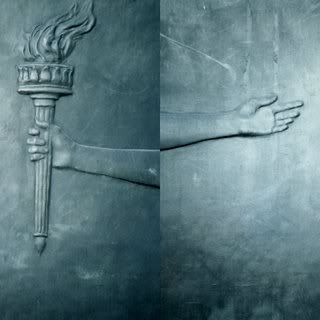 27. Fugazi | The Argument(Dischord, 2001)
27. Fugazi | The Argument(Dischord, 2001)It has turned out to be the DC hardcore legends' last album together, and
The Argument stands up as a fitting final statement from a group that had been consistently evolving from their conception, simultaneously spinning out their sharply focused punk drive into earnest melodicism and edgy experimentation. This final record distills their sound into their most melodic framework yet, without forsaking the dense textures and unrelenting energy that have always made them such a formidable rock band.
 26. Otomo Yoshihide's New Jazz Orchestra | ONJO(Doubtmusic, 2005)
26. Otomo Yoshihide's New Jazz Orchestra | ONJO(Doubtmusic, 2005)Otomo's various jazz outfits haven't exactly reinvented jazz, as if anyone could at this late date, but
ONJO is certainly the freshest and most vibrant example of this talented ensemble's idiosyncratic take on the genre. Otomo's rearrangements of jazz standards, pop tunes, and an epic take on Jim O'Rourke's "Eureka" (which is itself becoming something of a standard for the group) incorporate touches of electronic sound, noisy interjections from his turntables, hints that he's more than just a typical jazz bandleader. Surprisingly little conventional jazz here, as the album leans more towards avant-pop with guest vocalists, and off-kilter sound collages that recall Otomo's early 90s band Ground-Zero. It's probably the most complete and compelling fusion possible between jazz and more "out" modern musics.
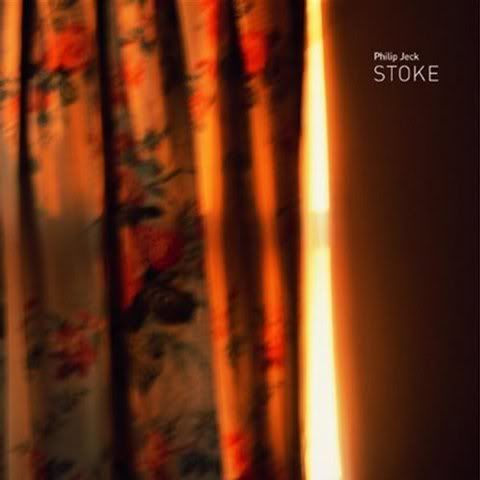 25. Philip Jeck | Stoke(Touch, 2002)
25. Philip Jeck | Stoke(Touch, 2002)Philip Jeck composes symphonies from discarded elements: an orchestra's worth of turntables playing warped, broken, damaged, and intentionally "prepared" records on which the imperfections and distortions in the sound create soulful, mysterious loops that only hint at their origins. This album is Jeck's most complete statement, as he moves away from the lengthy compositions of his earlier work to a more focused approach, developing a single idea in more depth on each shorter piece here. This pays off most potently on "Pax," several minutes of warped, slowed-down underwater vocals, gurgling unintelligible syllables through the fog of time and decay.
 24. The Mountain Goats | The Coroner's Gambit(Absolutely Kosher, 2000)
24. The Mountain Goats | The Coroner's Gambit(Absolutely Kosher, 2000)Probably John Darnielle's strongest single album, poised right at the brink of his transition from extreme lo-fi basement recorder to slightly more polished rocker. The songs here are still (mostly) recorded into a boombox, with occasional ornamentations of strings and other voices to buttress Darnielle's shaky acoustic guitar and even shakier voice. And his songs — aching, funny, suggestive of rich narratives between the lines — are as good as they've ever been, particularly the unforgettable emotional powerhouse "There Will Be No Divorce," its title a totem against the seemingly inevitable collapse of a relationship as fragile and sad as Darnielle's mournful singing.
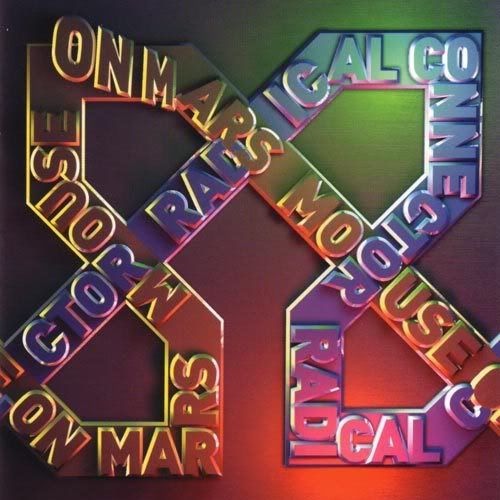 23. Mouse On Mars | Radical Connector(Thrill Jockey, 2004)
23. Mouse On Mars | Radical Connector(Thrill Jockey, 2004)Mouse On Mars' "pop" album, with vocals (by Niobe and the band's live drummer, Dodo NKishi) on every track. It's an irresistible confection on which the duo of Andi Toma and Jan St. Werner prove that accessibility need not come at the expense of adventurousness; their pop melodies are structured around typically jittery beats. The whole album is a joy, but the single "Wipe That Sound," with its chopped-up vocal fragments tripping all over themselves amidst an equally indirect groove, is a clear highlight.
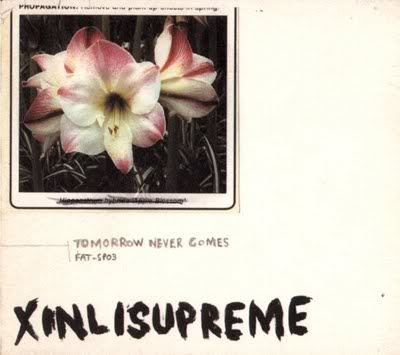 22. Xinlisupreme | Tomorrow Never Comes(Fat Cat, 2002)
22. Xinlisupreme | Tomorrow Never Comes(Fat Cat, 2002)Back when this album first came out, I described it like so: "Imagine this: a marching band on a crowded city street in the middle of a construction zone. Drills, concrete shattering, car horns, people yelling and talking, and, somewhere in the background, the sounds of the horns struggling to be heard above the din, sometimes rising up from the chaos, sometimes being pushed back under. That is the sound of Xinlisupreme’s unbelievable debut, the sound of chaos at war with order. This Japanese noise outfit has contained the force of that war for its own devious purposes, pitting passages of delicate beauty against the most crazed onslaughts this side of Merzbow." It all still applies.
 21. AMM | Fine(Matchless, 2001)
21. AMM | Fine(Matchless, 2001)The last proper release from the long-running trio lineup of AMM (Keith Rowe, Eddie Prévost and John Tilbury) finds the band at the logical extreme of their patiently developed aesthetic. The static hush of this music is profound, building only slowly towards the edgier sections where some more forceful sound — a burst of feedback from Rowe's tabletop guitar and electronics, the abrasive scrape of metal on metal emanating from Prévost's drum kit — emerges from the stillness.
 20. Richard Youngs | Autumn Response(Jagjaguwar, 2007)
20. Richard Youngs | Autumn Response(Jagjaguwar, 2007)A remarkable album of folk-pop characterized by an intriguing conceptual gimmick: all of the vocals are double-tracked from two different performances, so that Youngs' gentle voice at times seems to be harmonizing with itself, while at other times the two singers echo one another, overlapping and diverging from one moment to the next. The effect is mesmerizing, as these simple folk tunes are complicated by the ways in which Youngs' two voices drift together and apart atop the jangle of his guitar strumming. It's haunting and strange in precisely the kind of way that makes one want to dig into its intricacies, exploring its divergences and convergences, the moments when Youngs' guitar sometimes seems to get stuck in digital loops, the ghostly murmur that bathes some of these songs in an otherworldly aura.
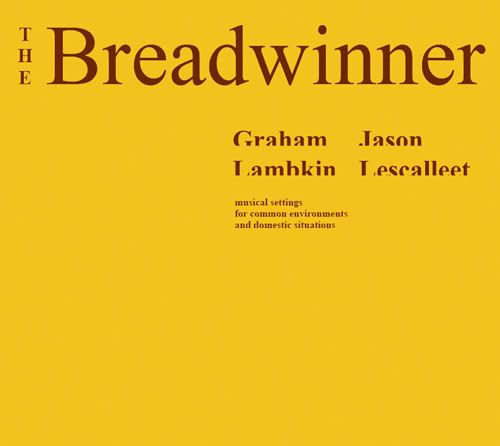 19. Graham Lambkin/Jason Lescalleet | The Breadwinner(Erstwhile, 2008)
19. Graham Lambkin/Jason Lescalleet | The Breadwinner(Erstwhile, 2008)Using field recordings, tape loops and cheap keyboards, these two utterly unique musicians have created an eerie, mind-warping masterpiece. The album's cover art is a nod to avant composer Robert Ashley, an appropriate reference point for what sound like recordings of haunted rooms, full of mysterious creakings and tiny noises magnified by the imagination, with sinister organ drones floating through the echoey spaces, droning melodies propelled by phantom fingers. It's creepy and yet somehow sensuous, a sound bath that encourages deep immersion in its hidden sonic eddies and potentially deadly whirpools of noise.
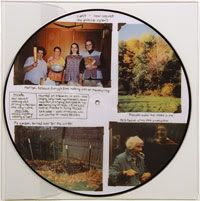 18. Can't | New Secret(RRR, 2005)
18. Can't | New Secret(RRR, 2005)Jessica Rylan's intimate, quirky explorations of synthesizer and voice are at a peak on this picture LP, as she feeds her vocals into homemade synth circuits, using her singing to modulate and drive the electronic sounds, which as a result are tweaked with every syllable, dancing around her voice in subtle fluctuations or spitting out chunky bursts of noise and abrupt gasping screams. Beautiful, awkward, unsettling, mysterious. Kind of like Jessica herself.
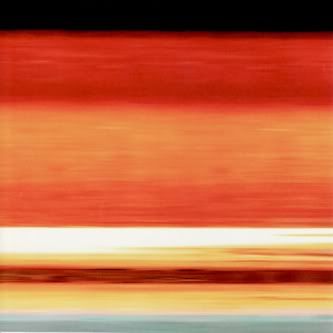 17. Birchville Cat Motel | Beautiful Speck Triumph(Last Visible Dog, 2004)
17. Birchville Cat Motel | Beautiful Speck Triumph(Last Visible Dog, 2004)The title of this remarkable album goes some way toward evoking its strange, radiant, detailed beauty, the majesty of these epic ambient compositions created by New Zealand musician Campbell Kneale and a long list of collaborators. In a general sense, this is drone music, but that term doesn't do much justice to the depth and complexity of Kneale's soundscapes, packed as they are with rattling percussion, hints of piano and moaning strings, the processed crackle of a campfire, ethereal organ tones, melodies that seem to hover in the air like a low fog. This music is, in its gentle way, thrilling. It is by turns destabilizing, seductive and disarmingly warm and accessible.
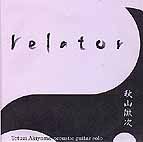 16. Tetuzi Akiyama | Relator(Slub, 2001)
16. Tetuzi Akiyama | Relator(Slub, 2001)Tetuzi Akiyama's first album of solo guitar was a defining landmark for Japanese improvisation in the new millennium. It's spacious music, defined by its caesurae, its openness and quietness. Akiyama deconstructs the acoustic guitar into a set of only vaguely guitar-like noises — scrapes, twangs, the percussive slap of a hand on wood, the drone generated by running some object along a string. And yet, though Akiyama's vocabulary with the guitar is abstract, his music retains a distant but tangible connection to the blues that initially inspired him to pick up the instrument.
Relator is a phenomenal record because of how thoroughly it recontextualizes the blues in relation to millennial Japanese experimental music, aerating the blues with silence and space.
 15. Dirty Projectors | Bitte Orca(Domino, 2009)
15. Dirty Projectors | Bitte Orca(Domino, 2009)With their most recent album, Dave Longstreth's Dirty Projectors have achieved some kind of apex of weird, fractured music where genre ceases to matter. These songs are indescribable, constantly spiraling out into new places, blending prog bombast, folky strumming, orchestral arrangements, soul and R&B. Longstreth's high voice croons and preens above spastic guitars, hints of riffs threatening like storm clouds and never quite coming together, drums falling all over themselves like the awkward kid who's late to the party, strings slicing in sporadically, cutting through the constantly assembling and disassembling song structures. And throughout the album, the voices of bandmates Amber Coffman and Angel Deradoorian drift sweetly through the jagged, complex structures Longstreth erects around them — and when, at the album's center, the two singers step forward for a pair of disarmingly straightforward, irresistible soul and pop tunes, the contrast pays off beautifully.
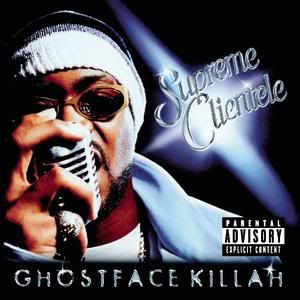 14. Ghostface Killah | Supreme Clientele(Razor, 2000)
14. Ghostface Killah | Supreme Clientele(Razor, 2000)In the seemingly endless stream of Wu Tang Clan-related releases from various members and associates, Ghostface's offerings have always stood out for their consistency, their endless invention, their wit and stylishness, and above all their infectious sense of fun. There's real joy in Ghostface's agile raps, a playfulness evident at the end of "One," when the rapper and his buddies laugh and riff off of a recurring vocal sample, building their own improvised jokes around it. The album is sprawling and varied, all anchored by the characteristically gritty Wu-Tang production, while Ghostface and a crowd of guest stars trade verses about childhood, friendship, love, crime, drugs, music and escape: urban life in all its guises.
 13. Joanna Newsom | Ys(Drag City, 2006)
13. Joanna Newsom | Ys(Drag City, 2006)After a debut album of eccentric Dylanesque folk tunes, accompanying her own warbling voice on harp, Joanna Newsom took an extreme left turn for her second album. She brought in orchestral pop legend Van Dyke Parks to weave his string arrangements into a suite of five lengthy songs, each of them structurally complex and lyrically evocative. Newsom's voice skips, squeals and croons through the delicate tinkling of her harp and the sticky sweet backdrops provided by Parks, and the songs develop unpredictably, building to crescendos of nearly overwhelming emotional intensity at times. Newsom's storytelling is sharp, too; "Monkey and Bear" is a surprisingly affecting fable about power, gender, unfulfilled dreams and exploitation, disguised as a nursery rhyme.
 12. Keith Rowe/Burkhard Beins | ErstLive 001(Erstwhile, 2004)
12. Keith Rowe/Burkhard Beins | ErstLive 001(Erstwhile, 2004)An artifact of an implicitly politicized improv performance, in which tabletop guitarist Rowe discovers a fragment of an R&B tune on shortwave radio and uses it as a foundation for an oblique political commentary on the Bush years. The music is appropriately aggressive and frenzied, shaping up as an all-out sonic war between the waves of Rowe's feedback and static and the percussion of Beins, who here deploys metal chains and cymbals with equal ferocity.
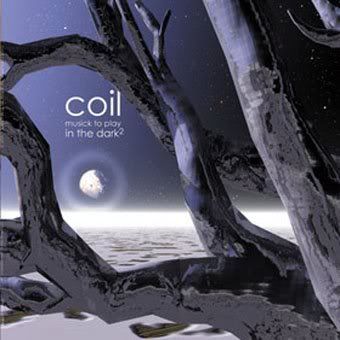 11. Coil | Musick To Play in the Dark Vol. 2(Threshold House, 2000)
11. Coil | Musick To Play in the Dark Vol. 2(Threshold House, 2000)The two volumes of
Musick To Play in the Dark (the first released just before the new millennium took hold) heralded Coil's transformation from restlessly experimental industrial pioneers who had, of late, been given over to lengthy drug-induced drones, into purveyors of moody electronic ballads, packed with swooning synths, haunting atmospheres, and of course the emotive if somewhat standoffish vocals of John Balance. This second volume is one of their finest achievements, from the sequenced melodies of "Tiny Golden Books," to the hissing steam "beats" of "Ether," to the oddball electro-pop of "Paranoid Inlay," to the creepy wordless murmurings of "Batwings (A Limnal Hymn)."
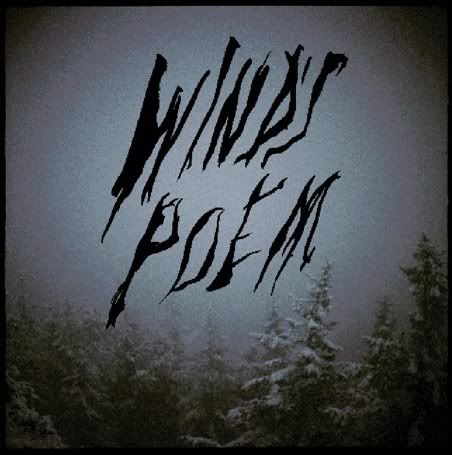 10. Mount Eerie | Wind's Poem(P.W. Elverum & Sun, 2009)
10. Mount Eerie | Wind's Poem(P.W. Elverum & Sun, 2009)Phil Elverum's post-Microphones project hasn't been very high-profile, especially considering the acclaim heaped on his former band and the fact that, regardless of name, both "bands" are essentially just solo projects with rotating guests. In a perfect world
Wind's Poem would bring Elverum back into the spotlight, as it's the best album he's recorded since
The Glow, Pt. 2. Elverum has fully absorbed the black metal influences that have fascinated him in recent years, incorporating that aura of creeping dread and the occasional more obvious hint of a blast-beat into his distinctive palette. The result is appropriately chilly and darkly beautiful, a face-to-face confrontation with mortality set in a remote wintery mountain area: referencing both Elverum's six-month retreat into the wilds of Norway, and David Lynch's
Twin Peaks, particularly the theme music of Angelo Badalamenti, which worms its way into the melodies of a few tunes here. It's cold, angry music, forbidding and often stormily dense, but not without passages of earthy beauty and grace, and always with Elverum's wavery, very human voice struggling against the howling wind, enacting a conversation with the forces of nature.
 9. Animal Collective | Strawberry Jam(Domino, 2007)
9. Animal Collective | Strawberry Jam(Domino, 2007)Much has been made of Animal Collective's supposed turn towards the mainstream, but the fact is they're still as fun as ever, still utterly original, still bursting with exuberance. This album is their most tightly focused yet, perhaps sacrificing a smidgen of the raw energy of their earlier discs and replacing it with an unrelenting momentum and pop sense. And it has the best one-two punch in their catalog, and one of the best in 2000s music: the transition from the pulsing "For Reverend Green," punctuated by Avey Tare's excited screams and growls, to the summery beauty of "Fireworks," which powerfully evokes the simple experience of hanging out in the outdoors, enjoying the company of friends and family. These domestic themes resonate through the group's later albums, but they're most eloquently expressed here, on the album that, at least so far, stands out as their masterpiece.
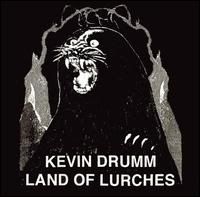 8. Kevin Drumm | Land of Lurches(Hanson, 2003)
8. Kevin Drumm | Land of Lurches(Hanson, 2003)Every once in a while, I forget why I enjoy noise music, or grow tired of the genre's excesses, thinking my tastes are starting to turn back to more conventional music. Whenever this happens, I need only put on
Land of Lurches to be reminded of all that is great about noise. Kevin Drumm's follow-up to his monumental
Sheer Hellish Miasma is, like its predecessor, raw and energetic, with a real sense of dynamics and narrative. Drumm's noise is dense and, even in its most blistering moments, surprisingly nuanced. There are three untitled tracks, and each stretches across a broad swath of noisy territory: the escalating dread and constant change of the first track; the chopped-up vocal samples hopping from speaker to speaker on the second; the spacey slow burn of the final track.
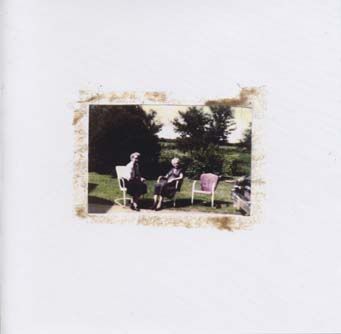 7. Greg Kelley | I Don't Want to Live Forever(Little Enjoyer, 2005)
7. Greg Kelley | I Don't Want to Live Forever(Little Enjoyer, 2005)Using just a spring drum and his signature trumpet, and a fairly small repertoire of repeated sounds, Greg Kelley creates this odd, impenetrably abstract piece that balances between minimalist composition and noise. Small sounds — a metallic clamor, a hissing intake of breath, a fluttery drone, a clear trumpet tone distorted by static, various clicks and clacks — are repeated ritualistically, arranged into a slow march, as Kelley cycles through these tiny recordings, engaging them in a stop-start tug-of-war between noise and silence.
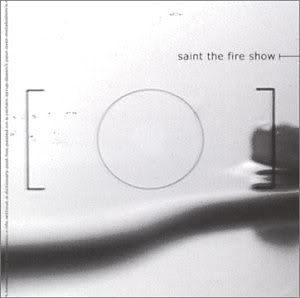 6. The Fire Show | Saint the Fire Show(Perishable, 2002)
6. The Fire Show | Saint the Fire Show(Perishable, 2002)On their third and final album, the Fire Show demonstrate that there is still, after all, some unexplored territory left within the confines of rock music. This devastating statement — so perfect, so conclusive, that the band apparently decided they'd said it all with this disc and promptly broke up — starts from a foundation in post-punk's spikiness but sets off boldly from that home base. On the first track, singer M. Resplendent croons achingly above the sparse, scattered bits and pieces of a song struggling to form beneath his voice. Elsewhere, the band conjures up the sound of a radio playing beneath the sea, or forges extracts of static into muscular riffs, while Resplendent free-associates streams of evocative but ultimately nonsensical wordplay.
 5. Keith Rowe/John Tilbury | Duos For Doris(Erstwhile, 2003)
5. Keith Rowe/John Tilbury | Duos For Doris(Erstwhile, 2003)Keith Rowe and John Tilbury had spent several decades as two-thirds of free improv pioneers AMM when they recorded this remarkable double-disc set, but somehow playing together as a duo, outside the familiar context of their longtime group, introduced something new and challenging into their musical relationship, something hard to define. Certainly, the music here isn't so different from the music of AMM: Tilbury's fragile, perfectly placed piano notes hovering within the haze generated by Rowe's guitar and electronics. It's beautiful, sparse and emotional music, with an intensity that bests even the formidable back catalog that the duo had produced in AMM.
 4. Coil | Black Antlers(Threshold House, 2004)
4. Coil | Black Antlers(Threshold House, 2004)The best representation of Coil's later-years turn to moody, dramatic electro-industrial pop, in which the British industrial pioneers harness their hard-edged synths to the increasingly mournful melodicism and sex-and-death-obsessed lyrics of John Balance, now eerily prescient following his untimely death. On this album, Balance fantasizes about having sex with Sun Ra, to appropriately cosmic accompaniment, crafts odes to Parisian street-dwellers, and reworks both his own band's back catalogue and an English folk ballad by way of fellow Brit industrial types Current 93.
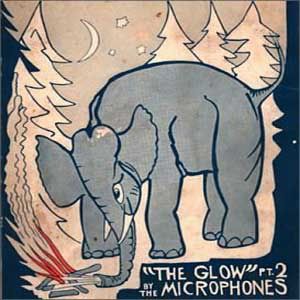 3. The Microphones | The Glow, Pt. 2(K, 2001)
3. The Microphones | The Glow, Pt. 2(K, 2001)Phil Elverum's lo-fi epic is an album that demands to be lived with, to linger and expand over time. Its songs are at once intimate and expansive, suggesting the domestic and the universal alike in Elverum's elusive lyrics and the intense crunch of his densely packed music. The peak, of course, is "The Moon," a song of the most awesome mystery and beauty, but it's the album's cumulative impact that makes it such an enduring classic.
 2. Boredoms | Vision Creation Newsun(Birdman, 2001)
2. Boredoms | Vision Creation Newsun(Birdman, 2001)With this album, the Boredoms completed their transformation from a Japanese noise-punk outfit into
the essential purveyors of the drum. The album pulses with an undercurrent of layered rhythms, as transcendent melodies, and the howls and chants of Eye Yamatsuka, soar atop the framework of their pounding, skittering drums. The album takes the band's love of Krautrock's hypnotic forward momentum and channels it to create music so dense and beautiful and affecting that it's overpowering.
 1. Sachiko M/Toshimaru Nakamura/Otomo Yoshihide | Good Morning Good Night(Erstwhile, 2004)
1. Sachiko M/Toshimaru Nakamura/Otomo Yoshihide | Good Morning Good Night(Erstwhile, 2004)The greatest recording from these three musicians who, together and apart, in all manner of groupings, have in recent years studied the infinite variations of high-register tones, clicks and sputters, shaping minimal materials into a sparse music hovering on the edges of audibility and comprehension. When it first came out, I wrote, "There's something actually — paradoxically — warm and emotional in these abstract sounds, something that touches deep nerves and primal reactions in totally unexpected ways. It's... sparse music of an exceptional physicality, simple music that seems complex and complicated: full of contradictions and possessed of an odd, untouchable, indefinable
something."
The other entries in this list can be found here:
200-151 |
150-101 |
100-51 |
50-1



